Weight-lifting belts are powerful tools for strength athletes, yet many lifters misuse them in ways that limit results or increase injury risk. At Get Gripped, we believe that the correct use of a belt can transform training, providing both safety and performance gains. To truly benefit from this essential piece of equipment, it’s important to understand the common errors lifters make and how to avoid them.
Table of Contents
- Key Takeaways
- Why Correct Belt Use Matters
- Common Mistakes When Using Weight Lifting Belts
- The Benefits of Correct Belt Use
- Conclusion
Key Takeaways
- Belts must fit snugly for proper support
- Position matters, keep it just above the hips
- Belts are for heavy lifts, not every exercise
- Bracing is essential; the belt enhances it
- Rely on belts as tools, not replacements for strength
Why Correct Belt Use Matters
A belt is not simply a piece of leather strapped around the waist. It is a tool designed to stabilise the spine and create intra-abdominal pressure during heavy lifts. When used correctly, it allows the athletes to lift heavier loads with improved form and reduced strain.
However, when misused, the same belt can encourage poor technique, reduce reliance on natural bracing, and give a false sense of security. According to research, lifting belts can enhance velocity and reduce injury risk, but only when worn properly. At Get Gripped, we supply belts engineered for strength and precision. But no matter how well-crafted, the benefits come only from correct use.
Common Mistakes When Using Weight Lifting Belts
Weight-lifting belts have become a staple in gyms across Australia, especially among those chasing strength, size, or both. From seasoned powerlifters at local comps to everyday gym-goers trying to push a few extra kilos on their deadlift, the belt is often seen as the go-to tool for support.
But here’s the thing, slapping on a belt doesn’t automatically mean you’re lifting smarter or safer. A lot of lifters, beginners and experienced alike, make common mistakes that not only reduce the effectiveness of the belt, but could increase the risk of injury.
Let’s break down the most common errors people make with weight-lifting belts and, more importantly, how to avoid them.
1. Wearing the Belt Too Early
- The Mistake:
Some gym-goers wear a belt for everything, bicep curls, warm-up sets, and even walking around the gym. This overuse leads to a dependency that can weaken the core over time. Belts are not meant to be a crutch, they’re a performance tool.
- The Fix:
Use the belt only when it’s needed, typically when lifting at 80% or more of your one-rep max, or during heavy compound lifts like squats, deadlifts, and overhead presses. Let your core do the work during lighter lifts and warm-ups to build true strength and stability.
2. Incorrect Belt Placement
- The Mistake:
Many lifters slap the belt on wherever it feels comfortable, too high on the ribs or too low on the hips. This can reduce its effectiveness or even cause sprains and strains.
- The Fix:
The belt should sit just above the hip bones, wrapping snugly around the lower back and the lower abs. You want to feel pressure around your core when you brace. Adjust the height slightly depending on the lift, for squats, it might sit a tad higher, and for deadlifts, a bit lower to avoid pinching.
3. Not Bracing Properly
- The Mistake:
Probably the biggest and most dangerous mistake is thinking the belt does all the work. Many lifters throw on a belt and forget to brace their core, assuming the belt alone will protect their spine.
- The Fix:
A belt doesn’t work unless you brace into it. Think about taking a big belly breath, into your stomach, not your chest and then pushing your abs out against the belt. This creates intra-abdominal pressure and stabilises your spine. Practice this bracing without a belt first, so the technique becomes second nature.
4. Wearing the Belt Too Loose (or Too Tight)
- The Mistake:
A belt that’s too loose offers zero support. But go too tight, and you’ll restrict your breathing and lose the ability to properly brace, defeating the whole purpose.
- The Fix:
The belt should be tight enough that you feel supported, but loose enough that you can still take a deep breath and push your abs out into it. If you’re using a lever belt, make sure it’s set at the right notch for your body, and if it’s a prong belt, find the hole that gives you just enough room to breathe and brace.
5. Using the Wrong Type of Belt
- The Mistake:
Not all lifting belts are created equal. A tapered, thin Velcro belt might be fine for general fitness or CrossFit, but it’s not ideal for heavy squats or deadlifts. Likewise, a thick powerlifting belt can be overkill for lighter training.
- The Fix:
Understand the types of weight lifting belts and choose the right belt for your style of lifting, pushing & pulling:
1 . For powerlifting or heavy barbell work, go with a 4-inch wide, 10mm or 13mm thick leather belt, preferably with a lever or prong buckle.
2 . For general strength training, a thinner belt or even a nylon one may do the trick.
6. Thinking the Belt Prevents All Injuries
- The Mistake:
Some lifters wear a belt, thinking it makes them invincible. They load up more than they can handle or get lazy with form, assuming the belt’s got their back.
- The Fix:
Remember, the belt is a tool, not a shield. It works best in combination with proper technique, smart programming, and sound biomechanics. Don’t skip the fundamentals, lift within your means, warm up properly, and maintain solid form.
7. Neglecting Core Training
- The Mistake:
Once people start relying on the belt, they often ignore direct core work. Over time, this can lead to weak abdominal muscles and instability when lifting, pushing & pulling without the belt.
- The Fix:
Keep doing core-focused movements like planks, hanging leg raises, ab rollouts, and farmer’s carries. These build the strength and control needed to support your spine naturally, belt or no belt.
The Benefits of Correct Belt Use
When used properly, a belt strengthens more than just performance.
- Improved Safety – Protects the lumbar spine during maximal lifts.
- Enhanced Stability – Reinforces the natural bracing mechanism.
- Performance Gains – Supports lifters in handling heavier weights with better form.
A systematic review in biomechanics supports the role of belts in reducing spinal load, confirming their importance in strength training.
Conclusion
Avoiding mistakes with weight-lifting belts is crucial for both safety and performance. When worn correctly, these belts can be the difference between inconsistent lifts and consistent progress. At Get Gripped, we design belts built for strength athletes who want reliability and results. Contact us today and equip yourself with the right belt for your lifting journey. Train with confidence, precision, and the assurance that your equipment is working with you, not against you.
FAQs:
How tight should a belt be?
The belt should be firm but not restrictive. You should be able to take a deep breath and push your core against it without discomfort.
Can I wear a belt for all exercises?
No. Belts are best reserved for heavy compound lifts such as squats, deadlifts, and overhead presses.
What is the difference between a powerlifting belt and a gym belt?
Powerlifting belts are stiff, uniformly wide, and built for maximal support. Gym belts are usually tapered and more flexible.
Where should I position the belt?
The belt should sit just above the hips, covering both the lower back and the abdominal area.
Does using a belt weaken the core?
No. However, over-reliance can prevent the development of raw core strength. Balance belt use with unbelted training.

